Ottawa neighbourhoods with the greatest growth
If you live in Leitrim, Manotick or Rideau Forest, the Woodroffe area, Constance Bay-Dunrobin, or Nepean’s Tanglewood, you are in neighbourhoods that have experienced astronomical growth since last year.
Leitrim looks to be up a whooping 86 per cent.
“It’s not a true number, since the real estate market wasn’t yet back on track after the pandemic first hit by last year, but there is an incredible spike,” says Taylor Bennett, a broker with Bennett Property Shop Realty and a regular contributor to CTV’s News At Noon.
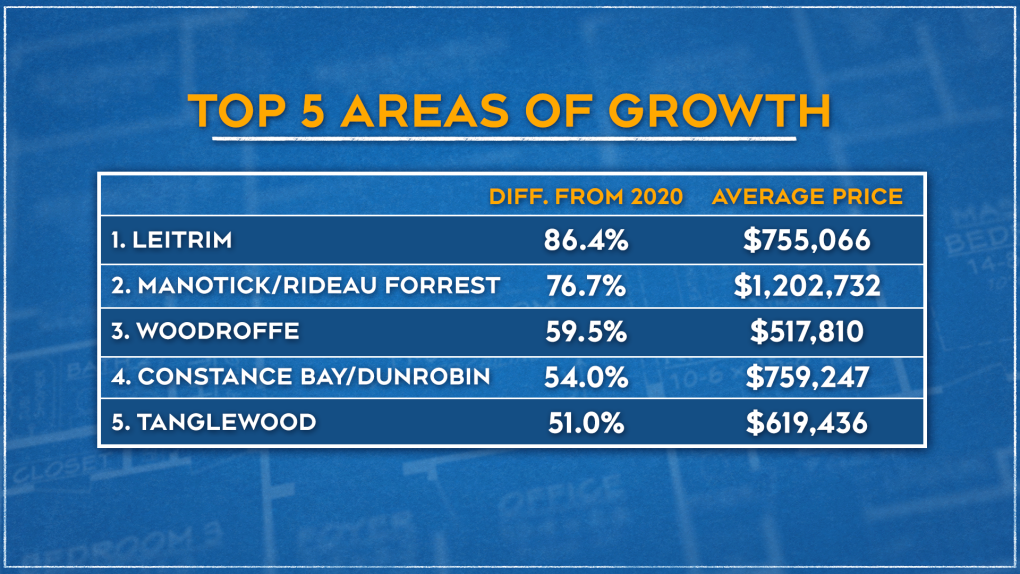
Why is Leitrim a draw?
“It’s a friendly-oriented area located in the south of the city where many new developments with stacked townhomes, row houses, and detached homes were all built within the last five to six years,” explains Bennett.
“With areas like Barrhaven and Riverside South experiencing recent surges in prices, buyers looking for better prices were driven to Leitrim.”
The average home price in Manotick and Rideau Forest is now $1.2 million.
“Many of the homes in the area offer both larger homes and larger lots. With ample interior space for at-home offices, and large backyards for kids to enjoy, these features fit perfectly into the family pandemic lifestyle.”
Bennett describes “Woodroffe” as a small neighbourhood just west of Westboro.
“While this neighbourhood may not be well known, with good transit access (which will improve with the future expansion of the LRT) and Queensway access, and a mix of both older homes ripe for flipping and low-maintenance, retirement-friendly condos it's not a huge surprise to find this area on this list.”
Constance Bay and Dunrobin have made this list before and this community is back again for the same reasons:
“Proximity to Kanata (30-40 minutes) but offers the cottage-like lifestyle, ideal for retirees or those working permanently from home.”
Bennett says Tanglewood is a newcomer to this list and one of the more affordable areas despite its recent growth.
“Located off Hunt Club, between Woodroffe and Merivale, this area has more bungalows and wider lots than most neighbourhoods, two of the most in-demand features buyers are looking for today.”
Bennett says realtors are seeing signs that we may be returning to a more typical market.
“The real estate headlines in 2020 were dominated by both historically low inventory levels and interest rates, contributing to the dramatic growth we saw over the last 24 months or so.”
Bennett is also expecting the new mortgage stress test to slow down the frenzied market.
“It’s still early to tell by exactly how much since it just went into effect on June 1,” says Bennett.
“With the stress test now in effect and inventory levels slowly increasing, we have seen some signs that we may be returning back to our typical balanced market.”
Bennett explains it’s not a complete picture to compare May 2020 to May 2021, because last spring we were still in early days of COVID-19.
“The increase of over 60 per cent in residential and condominium properties compared to this point last year likely raised some eyebrows, but keep in mind that for the first four to six weeks after the initial lockdown in mid-March 2020, the number of listings was at an all-time low, which naturally caused the number of sales to be low.
“But each month, as the number of new listings went up, we also saw the prices climb to another record-setting high in both residential and condo sales.”
Taylor Bennett compares May 2020 to May 2021:
May Market Summary
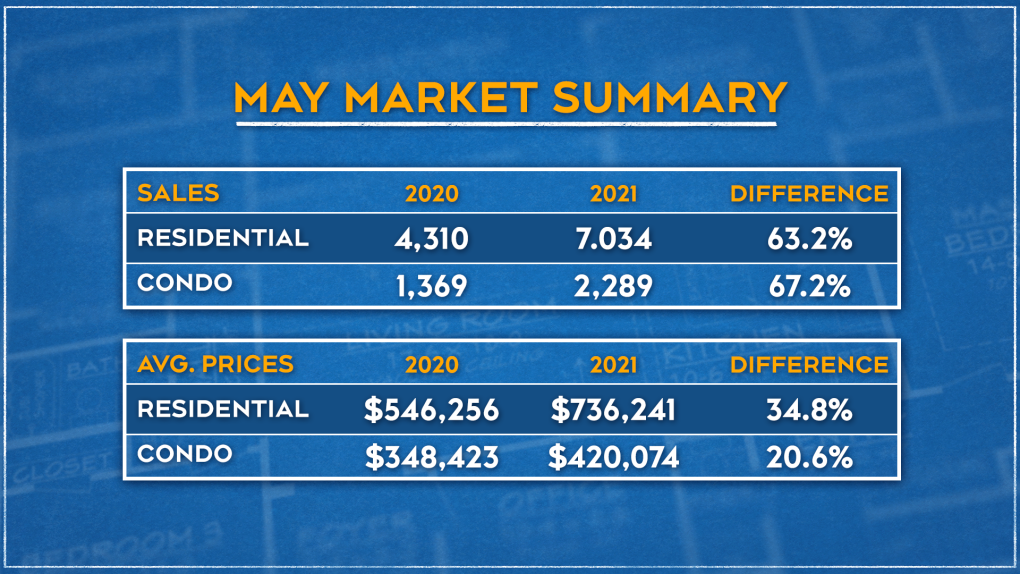
“For the first time in over 11 months, there is more than one month-of-inventory on the market. Up until recently we had to measure the inventory in weeks (months-of-inventory is: assuming no new listings hit the market and you continue selling at the current rate, how many months until there are no listings remaining).”
“It was a matter of time until the inventory levels started to increase, but even with the increased levels, we aren't in a 'buyer's market' or even a 'balanced market', typically sellers markets are defined as six or fewer months-of-inventory so we still have a way to go until we hit that point,” says Bennett.
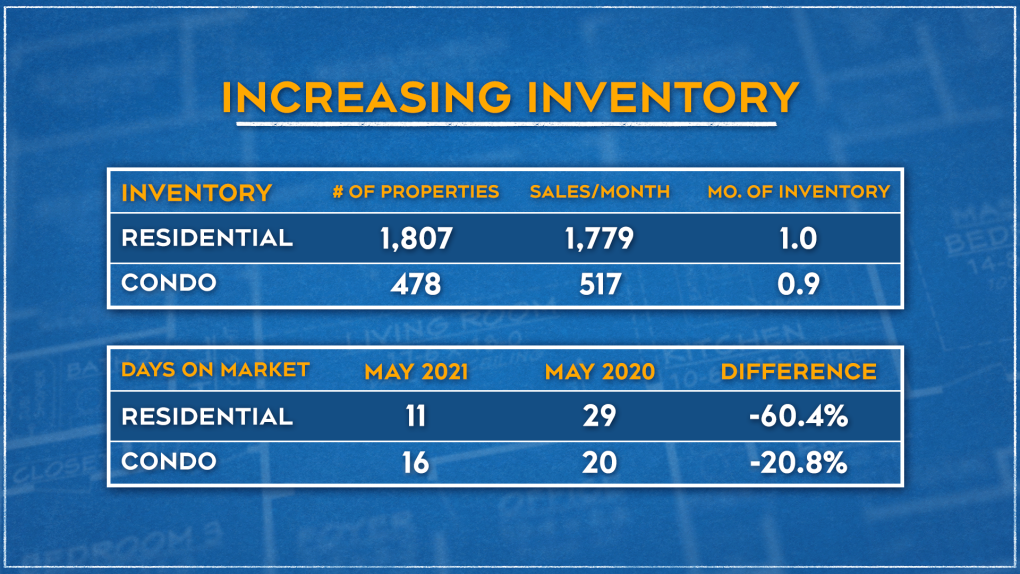
“This is still good news for buyers, as we have seen fewer multiple offer scenarios, so buyers have more properties to consider and they're up against less competition. Most importantly, we are seeing more listing priced close to their true market values instead of intentionally underpriced to create bidding wars. That being said, the market is still highly competitive; buyers still need to be as prepared as ever to get the best deal.”
Popular Styles - Residential
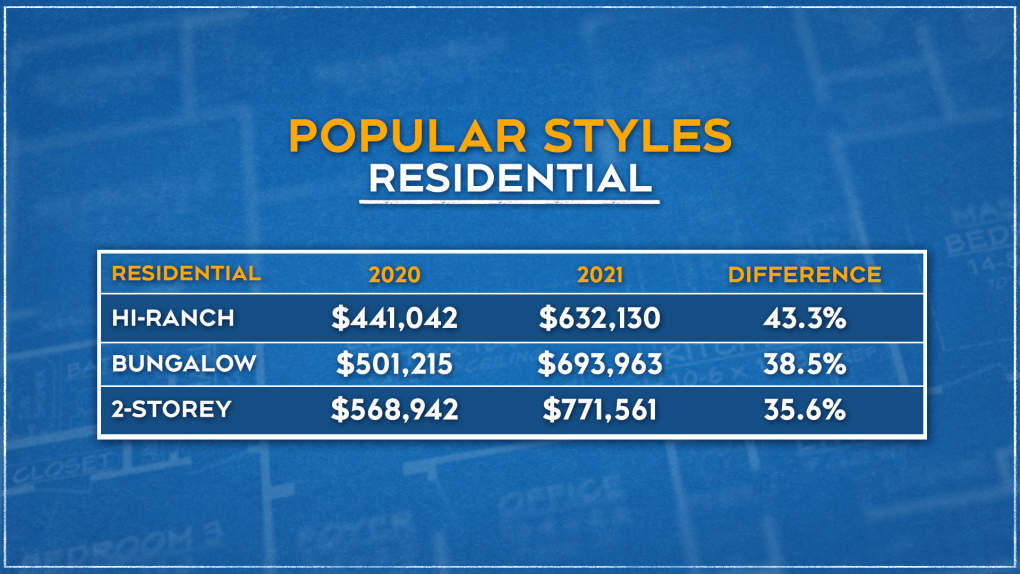
“Bungalows and two-storey homes are found in almost every neighbourhood across the city and they are typically the most popular, and often most expensive, styles of home; but, many people forget about hi-ranch style homes, which are almost a mix of a bungalow and a two-storey home,” Bennett says.
“While they aren't as prevalent as the other two styles, hi-ranch homes are on average over $130,000 less expensive than two-storey homes in today’s market. Hi-Ranch homes are a great alternative to those getting priced out of the other segments.”
Popular Styles - Condominium
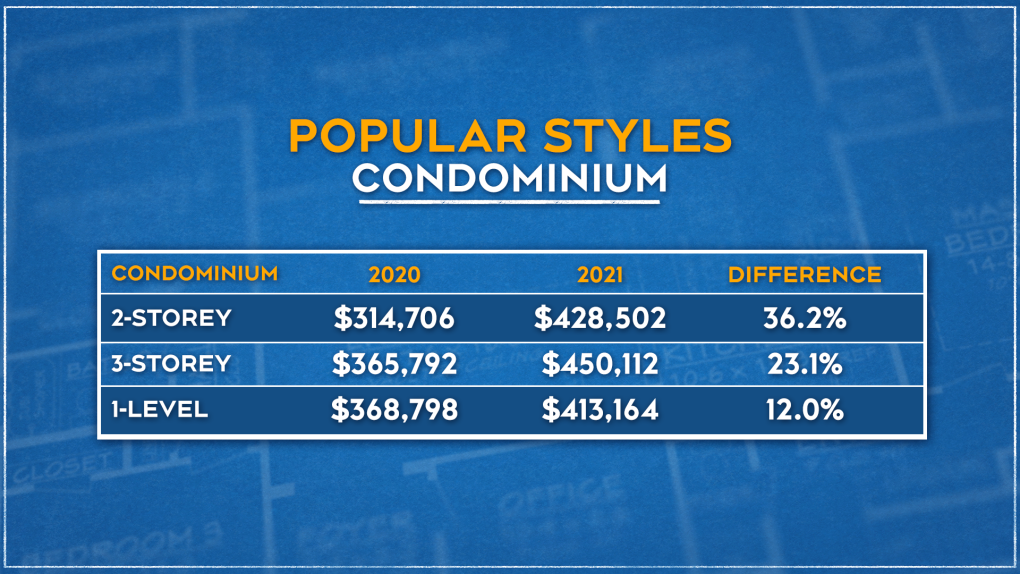
“It's important to remember that the terms 'condominium' defines the legal ownership of the property. It has nothing to do with the specific structure. But even among the three most popular styles, we don't see a huge difference in their prices,” Bennett explains.
“However, prices of downtown one-level and apartment-style condos didn't see the same types of increases as their two- and three-storey counterparts. As the lockdown measures loosen with the vaccine rollout and both students and workers come back to the downtown core, we have seen the demand for the urban-lifestyle slowly return."
CTVNews.ca Top Stories

Trump again calls to buy Greenland after eyeing Canada and the Panama Canal
First it was Canada, then the Panama Canal. Now, Donald Trump again wants Greenland.
King Charles ends royal warrants for Ben & Jerry's owner Unilever and Cadbury chocolatiers
King Charles III has ended royal warrants for Cadbury and Unilever, which owns brands including Marmite and Ben & Jerry’s, in a blow to the household names.
LIVE UPDATES Parts of Ontario under snowfall warning Monday as holiday travellers hit the road
Holiday travellers and commuters could be in for a messy drive on Monday morning as a significant round of snowfall moves into the region. Here are live updates on the situation in Toronto.
U.S. House Ethics report finds evidence Matt Gaetz paid thousands for sex and drugs including paying a 17-year-old for sex in 2017
The U.S. House Ethics Committee found evidence that former Rep. Matt Gaetz paid tens of thousands of dollars to women for sex or drugs on at least 20 occasions, including paying a 17-year-old girl for sex in 2017, according to a final draft of the panel's report on the Florida Republican, obtained by CNN.
Dozens of luxury condos and hotels in Florida are sinking, study finds
Dozens of luxury condos, hotels and other buildings in southeast Florida are sinking at a surprising rate, researchers reported in a recent study.
Dutch discover rare 500-year old wooden shoe
The Dutch are known worldwide for their wooden shoes, but the recent rare discovery of a 500-year-old one in the city of Alkmaar has shown just how widespread their use once was.
Blake Lively gets support from 'It Ends With Us' author and 'Sisterhood of the Traveling Pants' co-stars
Blake Lively is getting some high-profile support in the midst of allegations she's made against her 'It Ends With Us' director and co-star, Justin Baldoni.
The rent-a-friend industry is booming among Canada's Chinese diaspora
Dozens of people are offering rent-a-friend services on Xiaohongshu, a social media platform also known as Little Red Book or China's Instagram, in cities including Vancouver, Calgary and Toronto.
Statistics Canada reports real GDP grew 0.3 per cent in October
Statistics Canada says the economy grew 0.3 per cent in October, helped by strength in the mining, quarrying, and oil and gas extraction sector, following a 0.2 per cent increase in September.


































